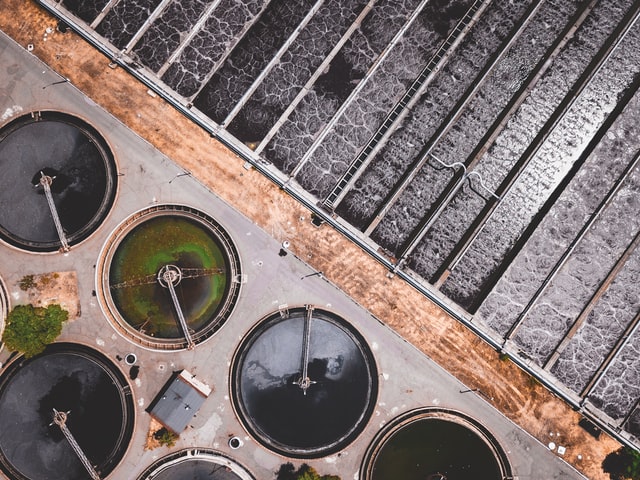Duplex 2205 Bolts / EN 1.4462
 Duplex 2205 bolts (EN 1.4462) are made from an austenitic-ferritic stainless steel, which was designed to deliver higher strength and corrosion resistance than 300 series stainless steels. It helps users to avoid stress corrosion cracking that is typically seen with 316 and 317. Duplex 2205 bolts combine the qualities of stress corrosion cracking resistance and high strength derived from being a ferritic alloy along with its austenitic fabrication capabilities. Download our datasheet for Duplex 2205.
Duplex 2205 bolts (EN 1.4462) are made from an austenitic-ferritic stainless steel, which was designed to deliver higher strength and corrosion resistance than 300 series stainless steels. It helps users to avoid stress corrosion cracking that is typically seen with 316 and 317. Duplex 2205 bolts combine the qualities of stress corrosion cracking resistance and high strength derived from being a ferritic alloy along with its austenitic fabrication capabilities. Download our datasheet for Duplex 2205.
Key Benefits
- Good general corrosion resistance
- High resistance to chloride stress corrosion cracking, as well as pitting and crevice corrosion
- Good sulfide stress corrosion resistance
- High strength and good fatigue resistance
- Good weldability and workability
- High energy absorption
- Low thermal expansion
Duplex 2205 Strength
In comparison to SS316, Duplex 2205 has been tested under reverse bending stresses at room temperature. The results show that the fatigue limit/yield strength is about twice as high for Duplex 2205.
Duplex 2205 Temperature Capabilities
Duplex 2205 bolts have a a ductile to brittle transition at -50°C and can also become embrittled at temperatures of 300-1000°C, therefore recommended use is -50°C to 300°C. Exposure above 300°C will not only cause the embrittlement of 2205 bolts, but also reduced corrosion resistance.
Duplex 2205 Corrosion Resistance
Providing industry with an improved corrosion solution to stainless, Duplex 2205 bolts offer good sulfide corrosion resistance, as well as chloride pitting and crevice corrosion resistant superior to 317L. The combination of chromium, molybdenum and nitrogen give Duplex 2205 bolts good protection from chloride pitting and crevice corrosion, which makes them useful for marine environments, brackish water, bleaching operations, closed loop water systems and some food processing applications. Though it is important to keep in mind that pitting corrosion can be a concern in chloride solutions when oxidizing media is present. In these conditions, the passive (protective) layer of the Duplex 2205 material may be compromised in localized pitting may occur.
Physical Properties
Density: 7,860 kg/m3
Ultimate Tensile Strength: 110 ksi
Yield Strength: 80 ksi
Thermal Conductivity at room temperature: 8.7 (BTU/hrofto°F)
Electrical Resistivity at room temperature: 33.5 (in x 10-6)
Duplex 2205 Uses
- Chemical industries use Duplex 2205 bolts on processing equipment, storage vessels and piping.
- Pulp and paper look to Duplex 2205 bolts for use in digesters, bleaching equipment, stock-handling systems and liquid tanks.
- Marine as well as oil & gas extraction and processing uses 2205 bolts in chloride and hydrogen sulfide environments
Availability
- All inch and metric sizes (EN 1.4462 DIN 933, DIN 931)
Resources: Duplex & Super Duplex Torque Specs, Flange Dimensions, Flange Bolting Chart
Duplex Fastener Types: Bolts, Nuts, Screws, Studs, Threaded Rods, Washers
Flange Types Available: Blind Flanges, Lap Joint Flanges, Slip On Flanges, Socket Weld Flanges, Threaded Flanges, Weld Neck Flanges
Duplex 2205 Grades / EN 1.4462, Chemistry & Specifications
Duplex 2205, UNS S32205, EN 1.4462 is a stainless steel material, whose “Duplex” name is derived from the mixed microstructure which contains roughly equal portions of ferrite and austenite. This grade is the most popular variety and this two-phase material is a significant upgrade from 316 stainless steel in terms of both yield strength and corrosion resistance.
Duplex 2205 Specifications: ASME SA 182, ASME SA 240, ASME SA 479, ASME SA 789, ASME SA 789 Section IV Code Case 2603, ASTM A 240, ASTM A 276 Condition A, ASTM A 276 Condition S, ASTM A 479, ASTM A 790, NACE MR0175/ISO 15156, NORSOK MDS D45 Grade F51, UNS S31803, UNS S32205, W. NR./EN 1.4462, Werkstoff 1.4462 Duplex

Mechanical Data


 Super Duplex 2507 fasteners (EN 1.4410) are made of a stainless steel alloy containing 25% chromium, 4% molybdenum, and 7% nickel. A Super Duplex screw is known for its high strength and excellent localized corrosion resistance to chloride. This alloy is widely used for its yield strength which is
Super Duplex 2507 fasteners (EN 1.4410) are made of a stainless steel alloy containing 25% chromium, 4% molybdenum, and 7% nickel. A Super Duplex screw is known for its high strength and excellent localized corrosion resistance to chloride. This alloy is widely used for its yield strength which is 